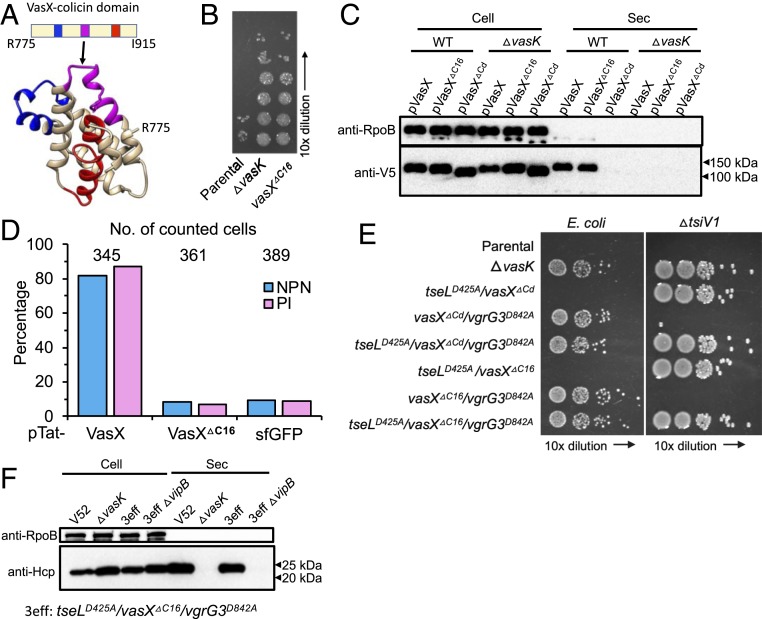Fig. 3.
Deletion of a colicin loop abolishes VasX toxicity but maintains secretion. (A) Predicted structural model of the colicin domain based on template 3FEW, with 13% identity and 84.3% confidence. Three predicted transmembrane regions within the colicin domain are highlighted in different colors. The loop within the second transmembrane region (pink) between A852 and F867 is deleted to result in VasXΔC16. (B) Competition assay using the ΔtsiV2 mutant as prey. (C) Secretion of VasX and its derivative mutants. Secretion of 3xV5 epitope-tagged VasX and its derivative mutants was detected using anti-V5 antiserum. (D) Membrane permeability and live–dead staining using NPN and PI fluorescence dyes. VasX and VasXΔC16 were induced in the periplasm using a Tat signal. Cells exhibiting NPN-positive and PI-positive are likely dead cells or cells with damaged membranes. Induction of sfGFP serves as a background control. See also SI Appendix, Fig. S2 for images. (E) Bacterial competition assay. Killers are indicated on the left and prey on the top. E. coli CC114 was used to test the overall antibacterial toxicity and ΔtsiV1 was used to specifically test TseL secretion in the activity mutant defective in both VasX and VgrG3. (F) Western blot analysis of Hcp secretion as an indicator of T6SS activity. Comparable secretion was found between wild-type V52 and the tseLD425A/vasXΔC16/vgrG3D842A mutant. In C and F, the RNA polymerase beta-subunit RpoB serves as a loading and cell lysis control.

